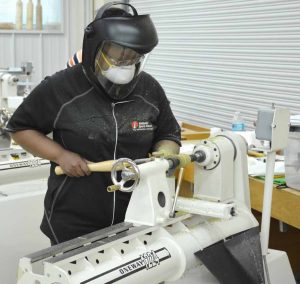Marketing Your Pen Making Work,
Part 1: Table Money Products
It is the fall craft show season! Time to get busy turning some pens!
I am asked, almost daily, “How can I get started selling my pen turning work?”
My first question back to that individual is “Where do you want to sell your work?”
The typical answer is usually “I don’t know”.
This is the first step.
There is no simple step-by-step guide to follow, if there was then everybody would already be selling their work, and no one would ask me for the answers!
So here are some basic questions & answers:
How do I find craft shows or fairs for selling my handmade wood pens?
Your best resource is the internet. Just type “local street fairs” into Google, and hundreds of thousands of responses came back in under a second! Then you can narrow it down to find the local shows and fairs in your area. Just add your state, town, or county to the search.
For argument sake, let’s break the types of shows down to three groups:
Group 1 – For lack of a better term we’ll call these “street fairs, local bazaars or church fairs.” These are inexpensive to get into, non-juried shows.
Group 2 – juried shows, medium size, local or regional
Group 3 – juried show, high end. These can be regionally or nationally well known, and established shows.
We will be discussing these 3 types of shows over the next few blog posts.
Group 1: Local Street Fairs, Local Bazaars or Church Fairs.
This is where you see the fair advertised in the local paper, with flyers at local stores, local social media, or someone tells you about it. Inquire about one of these shows and they will tell you that a six foot table will cost anywhere from $10 to $125 per table. These types of fairs are not juried, so you do not have to submit images of your work to get into the show. These shows do not charge the public to attend. It’s usually a first come, first served type of selection for the vendors. You could be competing with too many other pen makers, or be stuck between the Kettle Korn vendor and the guy selling CDs of his own, very loud, tuba songs. It may be difficult to determine how well you will do at the show, but it is a good way to start.
HINT: I do not go to a show strictly on the word of the promoter, their job is to sell tables or spaces and they do not care what goes on that table as long as they get YOUR money! Sometimes a promoter will brag about how many thousands of people will attend, and they will sell you on that idea. Many factors contribute to how well a show is attended, and if it is attended by buyers, and not just lookers. If you are not selling your pens just yet, go to as many of these shows as possible as a “customer”. You can get a good feel for the show this way, and know the shows you want to sell at when you are ready.
So you have paid the entrance fee, now what?
For this type of show, chances are you will not see the serious pen aficionado, so I would not have a lot of high end fountain pens there selling for hundreds of dollars. For these types of venues, I would suggest pens in the retail range of $25 to $50, say Slimline pens and single barrel pens such as the Sierra or Gatsby. It is always a good idea to have a few higher end pens there, say in the range of $75-$90 and these pens would be like a Baron or Tycoon made as a rollerball pen. You never know who will show up at one of these shows, so have the higher end pens to show off your talent & skills. They will be the “eye candy” of your table.
At these types of venues, Table Money items such as key rings, small styluses and other non-pen items like bottle openers and pizza cutters are always good for the money that will at least pay for the entrance fee. Have these items visible where your customers will check out so they can clearly see them, and purchase them, almost as am impulse item. These items are made from scrap material, they easy and quick to make, and sell for around $15. That’s what “table money” items are. You can pay for your entrance fee with just a few of these products being sold, so always have several types of small things for sale at your checkout station.
How do you display your items?
 It is very important to display your items so your customers can see them clearly. Please, don’t just throw a drape over the table and open up a carry case with your pens in it! Put some thought into how you will display your work. You want to have your pens at eye level if possible. Have some sort of a step arrangement to place acrylic stands or pen boxes on the steps to elevate them off the table. It can be as simple as stacking some sturdy and attractive cardboard, wood or acrylic boxes to give you several levels of interest on your display. Local craft stores have many items that can be used for display purposes. Look at jewelry display trees for hanging up key rings, small styli, and other small colorful items for sale. These are just a few ideas to get you started for a successful show.
It is very important to display your items so your customers can see them clearly. Please, don’t just throw a drape over the table and open up a carry case with your pens in it! Put some thought into how you will display your work. You want to have your pens at eye level if possible. Have some sort of a step arrangement to place acrylic stands or pen boxes on the steps to elevate them off the table. It can be as simple as stacking some sturdy and attractive cardboard, wood or acrylic boxes to give you several levels of interest on your display. Local craft stores have many items that can be used for display purposes. Look at jewelry display trees for hanging up key rings, small styli, and other small colorful items for sale. These are just a few ideas to get you started for a successful show.
The next time we will discuss mid-level shows, and some of the items to bring to that type of show.
To get you started, we have put some “Table Money” products, and booth display stands on sale at 10% off. Hurry these are only on sale until Monday October 24!

Happy Turning,















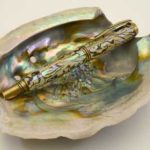
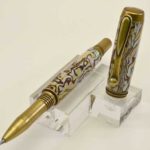

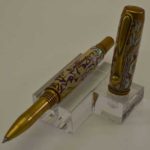
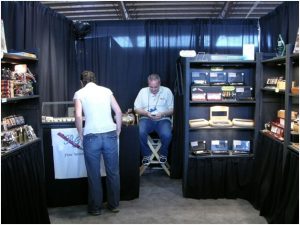

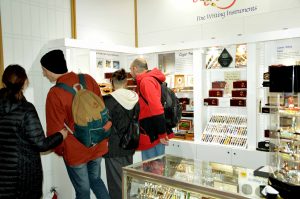 Hiring the
Hiring the  It is very important to display your items so your customers can see them clearly. Please, don’t just throw a drape over the table and open up a carry case with your pens in it! Put some thought into how you will display your work. You want to have your pens at eye level if possible. Have some sort of a step arrangement to place acrylic stands or pen boxes on the steps to elevate them off the table. It can be as simple as stacking some sturdy and attractive cardboard, wood or acrylic boxes to give you several levels of interest on your display. Local craft stores have many items that can be used for display purposes. Look at jewelry display trees for hanging up key rings, small styli, and other small colorful items for sale. These are just a few ideas to get you started for a successful show.
It is very important to display your items so your customers can see them clearly. Please, don’t just throw a drape over the table and open up a carry case with your pens in it! Put some thought into how you will display your work. You want to have your pens at eye level if possible. Have some sort of a step arrangement to place acrylic stands or pen boxes on the steps to elevate them off the table. It can be as simple as stacking some sturdy and attractive cardboard, wood or acrylic boxes to give you several levels of interest on your display. Local craft stores have many items that can be used for display purposes. Look at jewelry display trees for hanging up key rings, small styli, and other small colorful items for sale. These are just a few ideas to get you started for a successful show.


